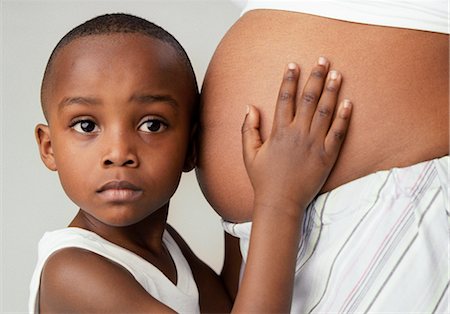- March 24, 2016
- Posted by: emobile
- Category: Trending Topic
No Comments

Emobileclinic Trending Topic :SLEEP DISORDER
Emobileclinic Reporter : Femi Fayomi
Sleep disorder is a medical condition that affects the sleep patterns of a person. Insomnia, which may be defined as the subjective problem of insufficient or nonrestorative sleep despite an adequate opportunity for sleep, occurs at one time or another in almost all adults. Persistent insomnia can be due to many issues ; mental and medical conditions.
It can be relieved temporarily by “sleeping pills,” especially benzodiazepines, but prolonged use of any of these pills is unwise because they compromise daytime performance and can be habit-forming.
Other common sleep disorders include:
Bruxism: Involuntarily grinding or clenching of the teeth while sleeping.
Delayed sleep phase disorder (DSPD): inability to awaken and fall asleep at socially acceptable times but no problem with sleep maintenance, a disorder of circadian rhythms.
Hypopnea syndrome: Abnormally shallow breathing or slow respiratory rate while sleeping.
Idiopathic hypersomnia: a primary, neurologic hypersomnia, which shares many similarities with narcolepsy.
Narcolepsy: Excessive daytime sleepiness (EDS) often culminating in falling asleep spontaneously but unwillingly at inappropriate times. Also often associated with cataplexy, a sudden weakness in the motor muscles that can result in collapse to the floor.
Night terror: Pavor nocturnus, sleep terror disorder: abrupt awakening from sleep with behavior consistent with terror.
Nocturia: A frequent need to get up and go to the bathroom to urinate at night. It differs from Enuresis, or bed-wetting, in which the person does not arouse from sleep, but the bladder nevertheless empties.
Restless legs syndrome (RLS): An irresistible urge to move legs.
Sleep apnea, obstructive sleep apnea: Obstruction of the airway during sleep, causing lack of sufficient deep sleep, often accompanied by snoring. Other forms of sleep apnea are less common. When air is blocked from entering into the lungs, the individual unconsciously gasps for air and sleep is disturbed. Stops of breathing of at least ten seconds, 30 times within seven hours of sleep, classifies as apnea. Other forms of sleep apnea include central sleep apnea and sleep-related hypoventilation.
Sleep paralysis: is characterized by temporary paralysis of the body shortly before or after sleep. Sleep paralysis may be accompanied by visual, auditory or tactile hallucinations. Not a disorder unless severe. Often seen as part of narcolepsy.
Sleepwalking or somnambulism: Engaging in activities that are normally associated with wakefulness (such as eating or dressing), which may include walking, without the conscious knowledge of the subject.
Somniphobia: A cause of sleep deprivation. Somniphobia is a dread/ fear of falling asleep or going to bed. Signs of illness include anxiety and panic attacks during attempts to sleep and before it.
SLEEP DEBT
Sleep debt is the effect of not getting enough sleep; a large debt causes mental, emotional and physical fatigue.
Sleep debt results in diminished abilities to perform high-level cognitive functions. Neurophysiological and functional imaging studies have demonstrated that frontal regions of the brain are particularly responsive to homeostatic sleep pressure. (Gottselig et al., 2006)
Scientists do not agree on how much sleep debt it is possible to accumulate; whether it is accumulated against an individual’s average sleep or some other benchmark; nor on whether the prevalence of sleep debt among adults has changed appreciably in the industrialized world in recent decades. It is likely that children are sleeping less than previously in Western societies. (Iglowstein et al, 2003)
EFFECTS OF FOODS AND DRUGS ON SLEEP
Hypnotics
Antihistamines, such as diphenhydramine (Benadryl) and doxylamine
Alcohol – Often, people start drinking alcohol in order to get to sleep (alcohol is initially a sedative and will cause somnolence, encouraging sleep). However, being addicted to alcohol can lead to disrupted sleep, because alcohol has a rebound effect later in the night. As a result, there is strong evidence linking alcoholism and forms of insomnia. Alcohol also reduces REM sleep.
Barbiturates cause drowsiness and have actions similar to alcohol in that they have a rebound effect and inhibit REM sleep, so they are not used as a long-term sleep aid.
STIMULANTS
Amphetamine are used to treat narcolepsy. Their most common effects are anxiety, insomnia, stimulation, increased alertness, and decreased hunger.
Caffeine is a stimulant that works by slowing the action of the hormones in the brain that cause somnolence, particularly by acting as an antagonist at adenosine receptors. Effective dosage is individual, in part dependent on prior usage. It can cause a rapid reduction in alertness as it wears off.
Cocaine and crack cocaine – Studies on cocaine have shown its effects to be mediated through the circadian rhythm system. (Abarca et al., 2002) This may be related to the onset of hypersomnia (oversleeping) in regard to “cocaine-induced sleep disorder.
Tobacco – Tobacco has been found not only to disrupt but also to reduce total sleep time. In studies, users have described more daytime drowsiness than nonsmokers.
Other analeptic drugs like Modafinil and Armodafinil are prescribed to treat narcolepsy, idiopathic hypersomnia, shift work sleep disorder, and other conditions causing Excessive Daytime Sleepiness. The precise mechanism of these CNS stimulants is not known, but they have been shown to increase both the release of monoamines and levels of hypothalamic histamine, thereby promoting wakefulness.



